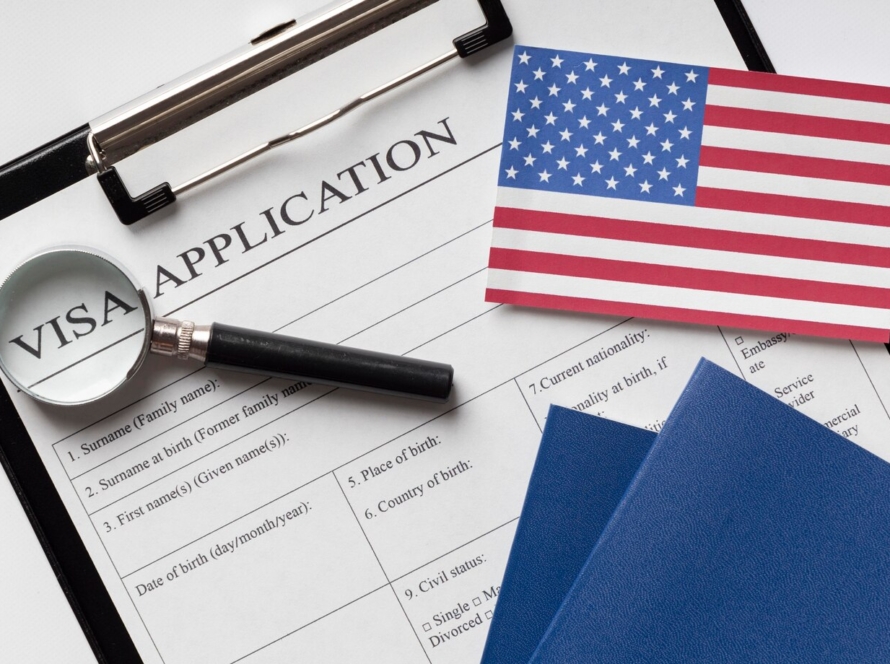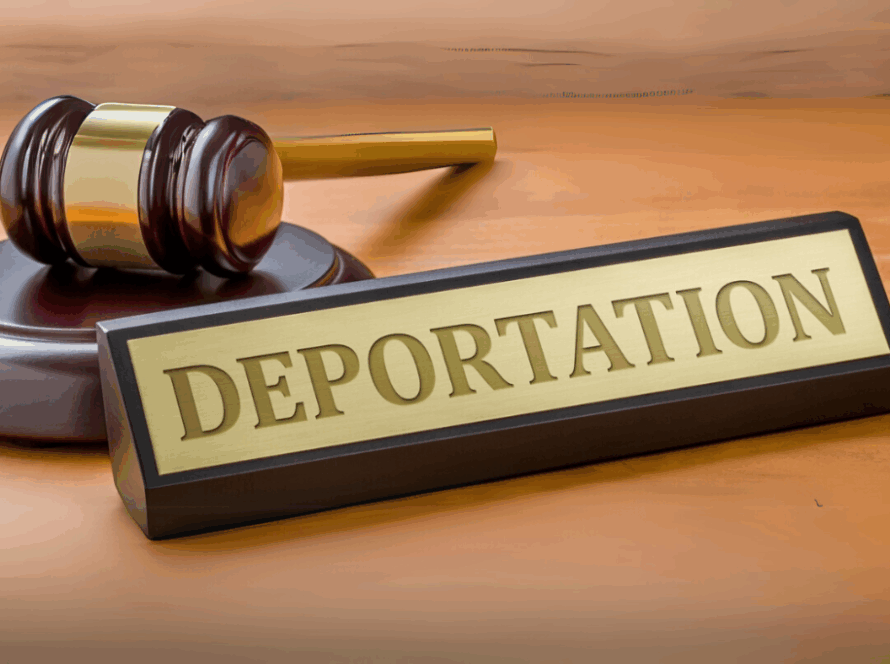Introduction
If you are a skilled professional looking to work in the United States, one of the most common and sought-after visa options is the H-1B visa. This non-immigrant visa allows U.S. employers to hire foreign workers for specialty occupations that require technical or theoretical expertise, typically in fields like technology, engineering, medicine, and academia.
However, while the H-1B visa offers excellent opportunities, it is also a competitive process. There are strict requirements, deadlines to meet, and a lottery system that could determine whether you will be able to work in the U.S. for the next few years.
In this guide, we’ll walk you through the entire H-1B visa process—from eligibility and application steps to tips on navigating the system. We’ll break down the key aspects, so you can feel prepared and confident in your journey to working in the United States.
What is the H-1B Visa?
The H-1B visa is a non-immigrant visa that allows U.S. companies to employ foreign workers in jobs that require a bachelor’s degree or higher in a specific specialty. These specialty occupations typically require specialized knowledge or expertise, such as roles in engineering, technology, health care, architecture, and even education.
Key Features of the H-1B Visa:
- Specialty Occupation Requirement: The position must require specialized knowledge and a degree in a related field.
- Duration: The H-1B visa is granted for an initial period of three years and can be extended for up to six years. Some extensions beyond six years may be possible if the visa holder is in the process of applying for a Green Card.
- Annual Cap: There is an annual cap of 65,000 H-1B visas, with an additional 20,000 reserved for applicants who have earned a Master’s degree or higher from a U.S. institution.
- Employer-Specific: The H-1B visa is tied to a specific employer. If you change employers, you must apply for a new visa.
- Dual Intent: The H-1B visa allows for “dual intent,” meaning holders can apply for permanent residency (Green Card) while on the visa without jeopardizing their status.
Eligibility Requirements
To apply for the H-1B visa, both the applicant (you) and the employer must meet certain criteria. Let’s go through each.
Eligibility for Applicants
- Educational Qualifications: You must hold a U.S. bachelor’s degree or its equivalent in a field related to the specialty occupation. For example, if you’re applying for a role in software engineering, you’ll need a degree in computer science or a closely related field.
- Specialty Occupation: The job you’re applying for must be considered a “specialty occupation.” This means that it must require a degree in a specific field and that the work cannot be performed without the relevant education or expertise.
- License Requirements: Some professions, such as healthcare, law, or architecture, require a license to practice in the U.S. If the role you are applying for needs a license (such as a medical doctor), you must meet the licensing requirements in the state where you intend to work.
Eligibility for Employers
- Job Offer: The employer must offer a full-time job in a specialty occupation that requires specialized knowledge or a degree in the field.
- Labor Condition Application (LCA): Before submitting your petition, the employer must file a Labor Condition Application (LCA) with the U.S. Department of Labor. The LCA certifies that the employer will pay the prevailing wage for the position and that the employment will not negatively affect the working conditions of U.S. workers.
- Petition Filing: Employers must file the Form I-129 (Petition for a Nonimmigrant Worker) with U.S. Citizenship and Immigration Services (USCIS). The employer is responsible for this process, although the applicant (you) will often need to provide documents to support the petition.
The H-1B Visa Application Process
The H-1B application process involves several steps, from the initial job offer to submitting documents and waiting for USCIS approval. Here’s a step-by-step breakdown of how the process works:
Step 1: Labor Condition Application (LCA)
Before submitting your petition to USCIS, the employer must file an LCA with the U.S. Department of Labor. The LCA confirms that:
- The employer will pay you the prevailing wage for the position.
- Your working conditions will not adversely affect U.S. workers in similar roles.
- There are no labor strikes or work stoppages at the job site.
The employer submits the LCA online, and it typically takes about 7-14 days for approval.
Step 2: Registration and Lottery
Due to the high demand for H-1B visas, there is an annual cap on the number of petitions that can be approved. For the 65,000 general visa cap, and the additional 20,000 available for individuals holding a U.S. master’s degree, a lottery system is used if the number of applications exceeds the cap.
Employers must register for the lottery during a specified window (typically in March). If your application is selected in the lottery, your employer can proceed with the next steps.
Step 3: Petition Filing
If your application is selected in the lottery, the next step is for your employer to submit a Form I-129 (Petition for a Nonimmigrant Worker) to USCIS. This petition includes:
- Proof of your qualifications (degrees, certifications, etc.)
- The employer’s Labor Condition Application (LCA)
- Your job offer letter and job description
- Filing fees and supporting documents
USCIS will review the petition, and the processing time can vary depending on the service center. You may be able to pay for premium processing to expedite your petition.
Step 4: USCIS Adjudication
USCIS will review your application and determine whether to approve or deny the petition. If approved, you will receive a Notice of Approval (Form I-797). If additional information is needed, USCIS may issue a Request for Evidence (RFE), which you or your employer will need to address.
Step 5: Visa Stamping and Entry
Once USCIS approves your petition, you can apply for a visa stamp at a U.S. consulate or embassy in your home country. After receiving the visa, you can travel to the U.S. and begin your employment.
H-1B Visa Costs
There are several fees associated with the H-1B application process, and most of these are the responsibility of the employer. However, in some cases, employers may pass some costs onto the employee. These fees include:
- Base Filing Fee: $460
- ACWIA Fee (American Competitiveness and Workforce Improvement Act): $750 for employers with 1-25 employees and $1,500 for employers with more than 25 employees.
- Fraud Prevention and Detection Fee: $500
- Premium Processing Fee (optional): $2,500
- Visa Issuance Fee: Varies by country (for example, approximately $190 for applicants from India).
It’s important for applicants to be aware of these costs, as they may be required to contribute to some of the fees, particularly if the employer is unable or unwilling to cover all expenses.
Duration and Extensions
The H-1B visa is granted for an initial period of three years. After that, it can be extended for an additional three years, bringing the maximum stay to six years.
If you wish to stay longer than six years, you may be able to extend your visa if you have a pending Green Card application. However, this process can be complex, and you should consult with an immigration attorney for advice.
Rights and Responsibilities of H-1B Holders
Rights:
- Employment: You are allowed to work only for the employer that filed the H-1B petition for you.
- Portability: You can transfer your H-1B visa to a new employer, but the new employer must file a new petition with USCIS.
- Dependents: Your spouse and children under 21 years old can accompany you on an H-4 visa. Spouses on an H-4 visa can apply for work authorization under certain conditions.
Responsibilities:
- Compliance: You must comply with all U.S. labor laws, including working only in the specified role and at the specified location.
- Wage Standards: Your employer must pay you the prevailing wage for the position.
- Record-Keeping: Employers must maintain records of your employment status and job duties.
Conclusion
The H-1B visa can be a great opportunity for skilled professionals seeking to work in the United States, offering the chance to gain valuable international experience, work for top-tier employers, and potentially transition to permanent residency.
While the application process is detailed and can be competitive, following the correct procedures, ensuring eligibility, and staying organized can significantly improve your chances of success.
Remember, obtaining an H-1B visa is just the beginning of your journey. Being proactive, staying informed, and working with knowledgeable professionals can help ensure a smooth experience throughout the process.
FAQs
Q1: How long does the H-1B visa process take?
The processing time varies, but it can typically take anywhere from 3 to 6 months. Premium processing can expedite this to 15 days.
Q2: Can I apply for the H-1B visa if I already work for a U.S. company on another visa?
Yes! If you’re already working in the U.S. on another visa (like an L-1), you can apply for the H-1B visa. However, your employer must file a new petition.
Q3: Can my spouse work in the U.S. on an H-4 visa?
H-4 visa holders can apply for work authorization under certain conditions, such as if the H-1B holder has started the process of obtaining a Green Card.
Q4: How do I increase my chances of getting selected in the H-1B lottery?
There’s no guaranteed way to get selected in the lottery, but securing a position at an employer exempt from the cap (such as a university or research institution) can improve your chances.
Q5: Can I change employers while on an H-1B visa?
Yes, but you will need to have your new employer file a petition with USCIS before you can begin working for them.


